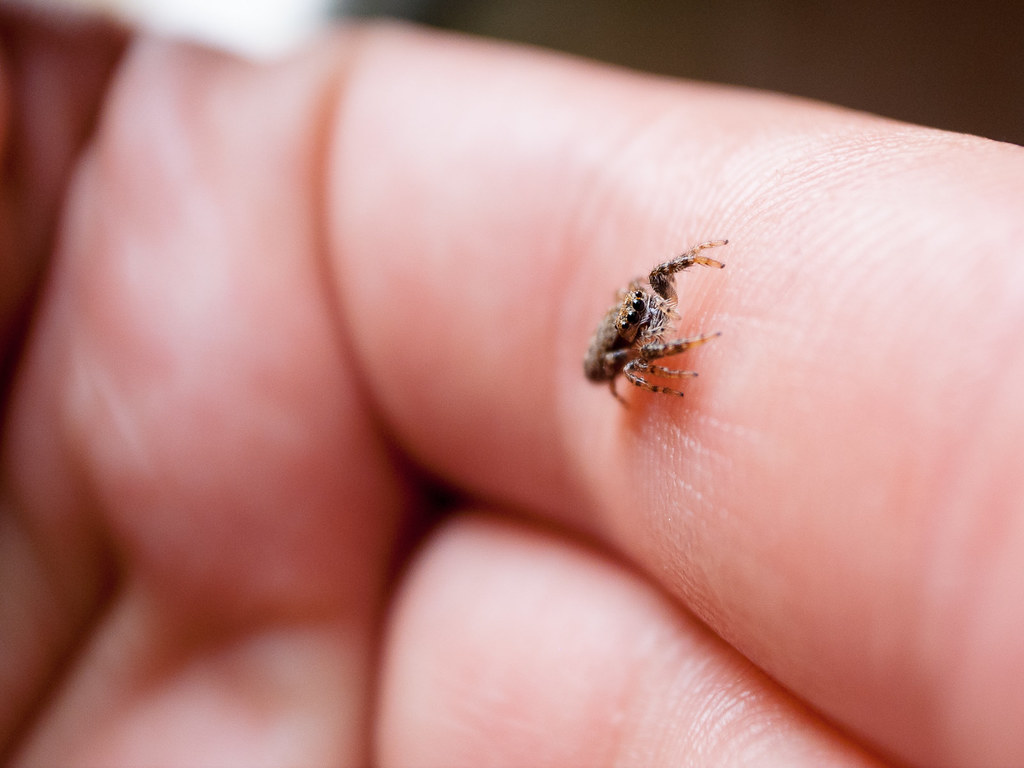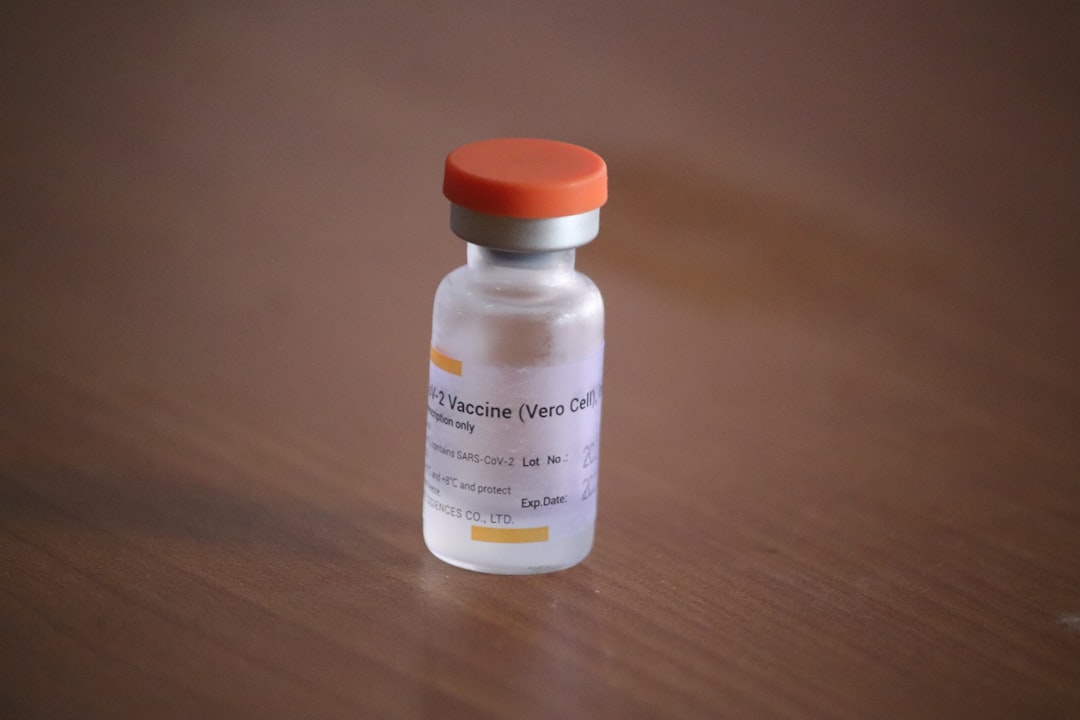In the shadowy corners of laboratories around the world, scientists are making a discovery that could revolutionize medicine forever. While most people recoil at the sight of a spider, researchers are embracing these eight-legged creatures as potential saviors in our fight against chronic pain. The very venom that strikes fear into hearts might soon become the key to unlocking a new generation of painkillers that could replace opioids and transform how we treat suffering.
The Unexpected Heroes of Pain Management

Deep within the venom glands of spiders lies a treasure trove of complex molecules that have evolved over millions of years to be perfect biological weapons. These venoms contain hundreds of unique compounds, each designed with surgical precision to target specific nerve channels in their prey. What makes this discovery so remarkable is that these same mechanisms that paralyze insects could potentially block pain signals in humans without the devastating side effects of traditional painkillers.
The Australian funnel-web spider, one of the world’s most dangerous arachnids, has become an unlikely champion in medical research. Scientists have isolated specific peptides from its venom that show incredible promise in blocking sodium channels responsible for transmitting pain signals. Unlike morphine or oxycodone, these compounds don’t create dependency or cause respiratory depression that kills thousands of people each year.
Nature’s Perfect Engineering

Spider venom represents millions of years of evolutionary refinement, creating molecular tools that are far more sophisticated than anything humans have synthesized. Each spider species has developed its own unique cocktail of toxins, tailored to their specific hunting needs and prey preferences. The Brazilian wandering spider’s venom, for instance, contains compounds that can selectively target different types of nerve cells with remarkable precision.
What fascinates researchers most is how these venoms can distinguish between different types of pain receptors. While traditional painkillers often affect the entire nervous system like a sledgehammer, spider venom compounds work like surgical scalpels, targeting only specific pain pathways. This selectivity could mean the difference between effective pain relief and debilitating side effects.
The complexity of these natural compounds is staggering. A single spider species can produce over 3,000 different bioactive molecules in its venom, each with potential therapeutic applications. This represents an almost inexhaustible pharmacy of possibilities, with most compounds remaining completely unexplored by modern medicine.
Breaking Through the Blood-Brain Barrier

One of the biggest challenges in developing new painkillers has always been getting medications to cross the blood-brain barrier, the protective shield that surrounds our most vital organ. Traditional pain medications often struggle to reach their targets effectively, requiring higher doses that increase the risk of dangerous side effects. Spider venom peptides, however, have evolved to be remarkably efficient at penetrating biological barriers.
The tarantula species *Psalmopoeus cambridgei* produces venom compounds that can cross the blood-brain barrier with ease, reaching pain centers in the brain that other medications cannot access. This breakthrough could lead to treatments for conditions like migraines, cluster headaches, and chronic pain disorders that have remained stubbornly difficult to treat.
The Opioid Crisis Solution

With over 100,000 Americans dying from drug overdoses annually, the search for non-addictive pain relief has become a matter of life and death. Spider venom-based medications offer hope where traditional approaches have failed catastrophically. These compounds work through entirely different mechanisms than opioids, targeting ion channels rather than opioid receptors, which means they carry no risk of addiction or respiratory depression.
Early clinical trials have shown that spider venom peptides can provide pain relief comparable to morphine without any of the euphoric effects that lead to addiction. Patients report effective pain management without the mental fog, constipation, or tolerance issues that plague opioid users. This could represent the holy grail of pain medicine: effective relief without the devastating consequences.
The economic impact could be enormous. The opioid crisis costs the United States over $78 billion annually in healthcare expenses, lost productivity, and criminal justice costs. Spider venom-based treatments could potentially save thousands of lives while reducing healthcare costs by billions of dollars.
Chronic Pain’s New Nemesis

For the millions of people suffering from chronic pain conditions like fibromyalgia, arthritis, and neuropathy, spider venom research offers unprecedented hope. These conditions often respond poorly to conventional treatments, leaving patients trapped in cycles of increasing medication doses and diminishing returns. Spider venom compounds target the specific types of pain signals associated with chronic conditions in ways that traditional medications cannot.
The Chilean rose tarantula’s venom contains peptides that specifically target chronic inflammatory pain, the type that torments arthritis sufferers. Unlike anti-inflammatory drugs that can cause stomach ulcers and liver damage, these spider-derived compounds appear to have minimal side effects while providing superior pain relief.
Recent studies have shown that certain spider venom peptides can actually help repair damaged nerve tissue, potentially addressing the root cause of chronic pain rather than just masking symptoms. This regenerative potential could transform chronic pain from a lifelong sentence into a treatable condition.
The Science Behind the Sting

Understanding how spider venom works requires diving into the intricate world of ion channels and nerve signaling. When you experience pain, specialized nerve cells called nociceptors detect harmful stimuli and send electrical signals to your brain. These signals travel through sodium channels, which act like gates that open and close to allow electrical current to flow through nerve fibers.
Spider venom peptides work by binding to these sodium channels and preventing them from opening, effectively blocking pain signals before they can reach the brain. What makes this approach so revolutionary is its precision – different peptides can target different types of sodium channels, allowing for customized pain relief tailored to specific conditions.
The binding mechanism is incredibly sophisticated. Spider venom peptides don’t just block channels randomly; they have evolved to recognize specific molecular signatures on their targets. This is like having a key that fits only one specific lock, ensuring that the medication affects only the intended pain pathways.
From Lab to Medicine Cabinet

The journey from spider venom to pharmaceutical product is both complex and fascinating. Scientists begin by “milking” spiders for their venom, a delicate process that requires expertise and specialized equipment. The venom is then analyzed using advanced techniques like mass spectrometry to identify individual compounds and understand their molecular structures.
Once promising compounds are identified, researchers must synthesize them artificially to produce the quantities needed for testing and eventual manufacturing. This synthetic approach is crucial because harvesting enough venom from spiders for mass production would be impractical and ethically questionable.
The first spider venom-based painkiller is expected to enter clinical trials within the next few years. The Australian company Venomtech has already developed several promising candidates, with one compound showing particular promise for treating chronic pain conditions that don’t respond well to existing medications.
Safety First: Understanding the Risks

While spider venom-based medications show tremendous promise, researchers are carefully evaluating their safety profiles. The same properties that make these compounds effective as painkillers could potentially cause problems if not properly controlled. Scientists are conducting extensive testing to ensure that therapeutic doses remain well below levels that could cause harmful effects.
One advantage of spider venom peptides is their size and complexity, which makes them less likely to cause unexpected interactions with other medications. These large molecules are also broken down relatively quickly by the body, reducing the risk of accumulation and toxicity that can occur with traditional painkillers.
The specificity of spider venom compounds actually makes them safer than many existing medications. Because they target only specific ion channels, they’re less likely to cause the widespread side effects associated with drugs that affect multiple systems in the body.
Global Research Efforts

Laboratories across the globe are racing to unlock the secrets of spider venom, with research teams in Australia, Brazil, the United States, and Europe leading the charge. The University of Queensland in Australia has established one of the world’s most comprehensive spider venom research programs, housing thousands of spider species and their venom compounds in specialized biobanks.
Brazilian researchers have made significant breakthroughs studying the venom of the Brazilian wandering spider, identifying compounds that could treat not only pain but also erectile dysfunction and heart conditions. This multi-target approach highlights the incredible versatility of spider venom compounds.
European pharmaceutical companies are investing heavily in spider venom research, recognizing the enormous commercial potential of these natural compounds. The race is on to develop the first commercially viable spider venom-based painkiller, with several companies claiming they’re close to breakthrough treatments.
Environmental Impact and Conservation

The growing interest in spider venom for medical applications has raised important questions about conservation and environmental impact. Many of the most promising spider species live in threatened habitats, and their venom properties could make them valuable for pharmaceutical development. This creates both opportunities and challenges for conservation efforts.
Some researchers argue that demonstrating the medical value of spider venom could help protect spider habitats and species that might otherwise be overlooked in conservation efforts. The potential economic value of these creatures could provide strong incentives for habitat preservation and species protection.
However, there are also concerns about over-exploitation of spider populations for venom collection. Responsible research practices and sustainable harvesting methods are essential to ensure that medical breakthroughs don’t come at the expense of biodiversity.
The Future of Pain Medicine

As we look toward the future, spider venom research represents just the beginning of a broader revolution in pain medicine. Scientists are exploring venom from other creatures, including scorpions, snakes, and marine animals, each offering unique compounds with potential therapeutic applications. This biomimetic approach to drug development could yield treatments for conditions we can barely imagine today.
The precision of spider venom compounds could also pave the way for personalized pain medicine, where treatments are tailored to individual patients’ specific pain conditions and genetic profiles. This level of customization could maximize effectiveness while minimizing side effects.
Advances in genetic engineering and synthetic biology may eventually allow scientists to produce spider venom compounds in bacteria or other organisms, making large-scale production more feasible and ethical. This could democratize access to these revolutionary treatments worldwide.
Overcoming Public Perception

One of the biggest challenges facing spider venom-based medications isn’t scientific or technical—it’s psychological. Many people have deep-seated fears of spiders, and the idea of injecting spider venom into their bodies may seem terrifying. Researchers and medical professionals will need to work carefully to educate the public about the safety and benefits of these treatments.
The irony is striking: the very creatures that inspire fear in so many people could become their salvation from chronic pain and suffering. This paradigm shift requires not just scientific breakthroughs but also changes in how we think about and relate to the natural world.
Educational campaigns and patient advocacy groups are already working to build awareness and acceptance of spider venom-based treatments. Early patient testimonials from clinical trials could play a crucial role in overcoming public skepticism and fear.
Regulatory Challenges and Approval

The path from promising research to approved medication is long and complex, especially for treatments derived from exotic sources like spider venom. Regulatory agencies like the FDA must carefully evaluate not only the safety and efficacy of these compounds but also the manufacturing processes and quality control measures needed to ensure consistent, safe products.
The unique nature of spider venom compounds presents both opportunities and challenges for regulatory approval. While their natural origin and specific mechanisms of action may help accelerate approval processes, their complexity also requires sophisticated testing and evaluation methods.
International coordination will be crucial for bringing spider venom-based treatments to global markets. Different countries have varying regulatory requirements, and harmonizing these standards could help ensure that breakthrough treatments reach patients worldwide as quickly and safely as possible.
Economic Implications

The economic potential of spider venom-based painkillers extends far beyond the pharmaceutical industry. These breakthrough treatments could significantly reduce healthcare costs associated with chronic pain management, opioid addiction treatment, and the broader societal impacts of the pain crisis.
The development of spider venom medications could also create new industries and job opportunities in biotechnology, synthetic biology, and specialized manufacturing. Countries with rich spider biodiversity may find themselves at the center of a new bioeconomy, with significant implications for economic development and international trade.
Investment in spider venom research has already attracted significant venture capital and pharmaceutical company funding. The potential market for effective, non-addictive painkillers is estimated to be worth tens of billions of dollars annually, driving intense competition and innovation in the field.
Conclusion

The transformation of spider venom from a feared biological weapon into a potential medical miracle represents one of the most exciting developments in modern medicine. These eight-legged chemists have spent millions of years perfecting compounds that could finally provide the safe, effective pain relief that has eluded medical science for so long.
As clinical trials progress and the first spider venom-based medications move closer to market, we stand on the brink of a new era in pain management. The compounds that evolved to paralyze prey could soon liberate millions of people from the twin curses of chronic pain and opioid addiction.
The next time you encounter a spider in your home, perhaps you’ll pause to consider the remarkable potential hidden within those tiny venom glands. In a world where some of our greatest medical breakthroughs come from the most unexpected sources, could the solution to one of humanity’s oldest problems really be sitting in the corner of your room, spinning its web?
